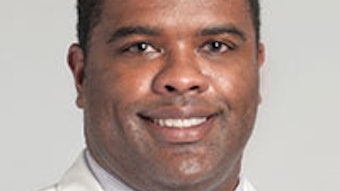From the AAO-HNS Patient Safety and Quality Improvement Committee: Resident education in patient safety and quality improvement: What’s new?
Beyond education and institution requirements, there is a clear need for our trainees to learn useful patient safety and quality improvement (PS/QI) skills in order to provide better patient care in practice. Teaching residents about safety and quality requires a dedicated curriculum. Numerous specialties have published their experiences incorporating PS/QI into graduate medical education.
Sarah N. Bowe, MD, Nausheen Jamal, MD, Stephen C. Maturo, MD
Beyond education and institution requirements, there is a clear need for our trainees to learn useful patient safety and quality improvement (PS/QI) skills in order to provide better patient care in practice. Teaching residents about safety and quality requires a dedicated curriculum. Numerous specialties have published their experiences incorporating PS/QI into graduate medical education.1,2 The first basic outline for an otolaryngology education program in PS/QI was proposed in 2015.3 This framework suggested the following pertinent topics: quality improvement, clinical and patient safety, effective communication, systems approach to medical error, and metrics and measurement. In order to introduce these concepts, a wide array of teaching methods was presented, including didactics, self-study/learning modules, group discussion, case-based learning, experiential learning, and QI projects. Over the past four years, we have seen these suggestions transformed into reality as otolaryngology programs have incorporated many of these ideas into unique learning experiences.4,5 In addition to what is available in the literature, national meetings can be a great source of inspiration, offering new and innovative options for resident education, including those already being used in other otolaryngology training programs.

When selecting curricular resources for PS/QI education, residency programs should first assess the broader organizational environment to determine whether institutional requirements or resources are already in place. Some hospital systems have sought to align the safety and quality experiences of all trainees by implementing a core curriculum for all programs. This was the case for the Virginia Commonwealth University Health System (VCUHS). In 2016, the institution set organizational priorities to include quality improvement and adopted the Institute for Healthcare Improvement (IHI) Plan-Do-Study-Act (PDSA) Model for Improvement. In order to have a shared mental model for this improvement work, faculty and residents were required to complete a subset of the IHI Open School modules.6 When organizational mandates exist, it is critically important to incorporate this into the training program’s education strategies. The VCUHS residents completed the required modules over a two-year time period. Since starting this initiative, they have utilized the IHI Model for two team-based projects, one of which focused on developing an automated electronic hand-off tool. Compared to their previous handwritten tool, residents saved 10 minutes and 80 clicks, while simultaneously achieving better readability and accuracy. Furthermore, they are continuing to engage in PDSA cycles as they test the implementation of their electronic hand-off tool in practice.
An alternative approach arises when the teaching institution has not standardized any core PS/QI education requirements. In this case, training programs have more flexibility to customize their own curricula. In April 2015, the University of Kentucky (UK) Department of Otolaryngology performed a comprehensive overhaul of its Morbidity and Mortality conference. They transitioned to a Quality Improvement/Patient Safety (QIPS) conference with the goal to provide a monthly one-hour conference that was focused on systems improvement, as well as teaching/board review enhancement. Three targeted high-yield cases are picked by the program director each month. The primary resident provides a brief case summary and didactic lecture/review, which is followed by a QIPS-focused discussion. Since transitioning, the program has noted improved comfort and confidence with previously “difficult to discuss” topics, as well as increased in-training exam scores.
The UK program has also participated in an exciting ACGME-approved study examining root-cause analysis (RCA) training. Interns and program directors were given instruction in the “SWARM” process, which is a rapid response to gain collective intelligence (think bees) and consists of five steps: 1) explanation of the process, 2) participant introductions, 3) review of the facts, 4) discussion including investigation of the underlying systems factors, and 5) identification of focus areas for action and assignment of task leaders with specific deliverables and completion dates.7 The SWARM provides a standard approach to investigate the “how” and “why” of adverse or undesirable events but directs efforts at the unit/department level to enact quicker, meaningful changes. The UK team is early in the process of determining the frequency and sustainability of this work but has received positive feedback from residents and faculty that this process takes some of the “mystery” out of RCA and provides “real world” changes for their patients.
Overall, one of the broader goals for all these education frameworks is to provide trainees with the requisite knowledge to be able to engage in meaningful PS/QI projects. In a recent study, 86 percent of responding otolaryngology program directors noted that a resident-driven QI project was necessary to satisfy graduation requirements.8 Unfortunately, momentum for individual trainee-driven projects can be lost when the resident moves on to different rotations or graduates and sustained interest in the topic by other trainees or faculty is not present.4 This was noted to be the case at the University of Pittsburgh. In their program, there was a yearly resident QI project requirement that was frequently not met. If residents did engage, it was often on a small project that they worked through on their own. In response, the department decided to mix things up and “flip” the classroom. Background didactics on PS/QI principles is provided for review prior to scheduled team-based workshops. Resident teams, arranged by PGY class, choose their own QI project based on previously identified systems problems. They recruit their own group of experts, including faculty mentors and interdisciplinary collaborators. Working together, they develop a timeline for ongoing-PDSA cycles with specific task assignments that are completed prior to the next meeting. This “blended” approach of combining didactics with experiential learning is a proven effective adult learning model.2-4 Furthermore, buy-in from multiple stakeholders helps sustain momentum in the project encouraging true longitudinal work with examination of results over time. Recent projects have included efforts to decrease radiation exposure in the emergency department for peritonsillar abscess and deep neck space infection imaging, as well as to improve methods for preoperative counseling for head and neck surgery patients.
Developing an effective PS/QI curriculum can be a daunting task. Fortunately, a lot of groundwork has been laid, yielding many options for training programs to consider when adapting or expanding their current education offerings.
Points of contact:
Kelley M. Dodson, MD
Program Director, Virginia Commonwealth University
kelley.dodson@vcuhealth.org
Brett T. Comer, MD
Program Director, University of Kentucky
brett.comer@uky.edu
Noel Jabbour, MD
Assistant Program Director, University of Pittsburgh
Noel.Jabbour@chp.edu
References
- Wong BM, Etchells EE, Kuper A, et al. Teaching quality improvement and patient safety to trainees: a systematic review. Acad Med 2010;85:1425–39.
- Wong BM, Levinson W, Shojania KG. Quality improvement in medical education: current state and future directions. Med Educ 2012;46:107.
- McCormick ME, Stadler ME, Shah RK. Embedding quality and safety in otolaryngology-head and neck surgery education. Otolaryngol Head Neck Surg 2015;152:778–82.
- Bowe SN, McCormick ME. Resident and fellow engagement in safety and quality. Otolaryngol Clin N Am 2019; 52:55-62.
- Nussenbaum B, Chole RA. Rethinking morbidity and mortality conference. Otolaryngol Clin N Am 2019; 52:47-54.
- IHI Open School. In: Institute for Healthcare Improvement. 2018. Available at: http://www.ihi.org/education/ihiopenschool/Pages/default.aspx. Accessed April 1, 2019.
- Li J, Boulanger B, Norton J, et al. “SWARMing” to improve patient care: a novel approach to root cause analysis. Jt Comm J Qual Patient Saf 2015;41:494-501.
- Bowe SN. Quality improvement in otolaryngology residency: survey of program directors. Otolaryngol Head Neck Surg 2016;154:349–54.


















